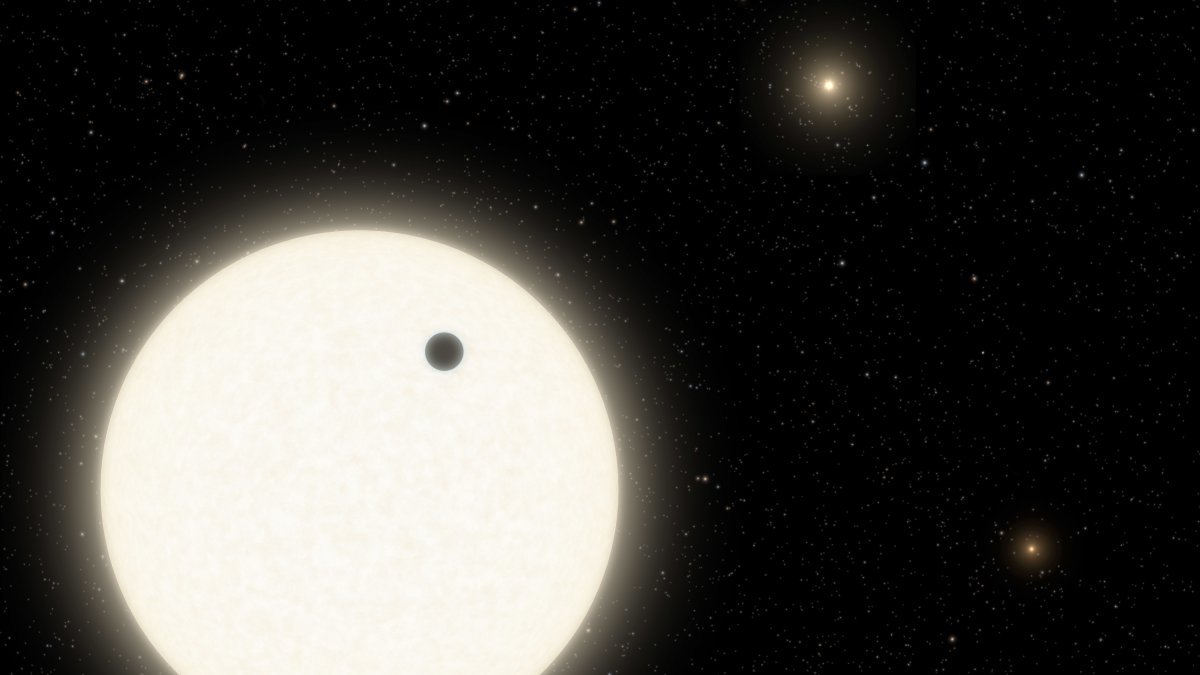Astronomy: Unusual exoplanet in a triple star system
Source: Heise.de added 12th Jan 2021After several years of searching, and thanks only to various telescopes, a group of US researchers has confirmed an exoplanet orbiting on an unusual orbit in a triple star system. That explains the Exoplanet Science Institute of NASA, whose space telescopes Kepler and TESS were decisive for the find. KOI-5Ab (the name in the Kepler data) or TOI – 1241 b (his TESS name) orbits the star KOI-5A , which in turn forms a double system with KOI-5B. They are all orbited by the KOI-5C. At the same time, the orbital plane of the exoplanet is strongly shifted compared to that of the stars.
The orbits of the stars and of KOI-5Ab
(Image: Caltech / R. Hurt (Infrared Processing and Analysis Center, or IPAC))
Exoplanet or is it a star? As the scientists now explain, KOI-5B was the second potential exoplanet that Kepler discovered after starting his mission in 2009 had – several thousand were to follow. But because it is such a complicated system, no one has undertaken the necessary follow-up analyzes. It was only years later that David Ciardi and others from the Exoplanet Science Institute turned to the candidate again and took a closer look at the telescopes WM Keck in Hawaii, Palomar near San Diego and Gemini North in Hawaii. This confirmed the suspicion that it was an exoplanet, but they weren’t really sure. It could also have been a fourth star, explains Ciardi.
The real confirmation only has the new exoplanet hunter NASA delivered the TESS (Transiting Exoplanet Survey Satellite) space telescope. That also discovered a candidate in this system, reason enough to take another closer look. Through precise analyzes, Ciardi and his team were able to confirm that it is an exoplanet that orbits its star approximately once every five days.
Its shifted orbital plane, which is not the same as that of the matches both stars KOI-5A and KOI-5B. If all three celestial bodies have formed from the same disk of dust, one would expect planes – like in the solar system. The researchers speculate that the second inner star threw the exoplanet from its original orbit into its current one.
(Source: NASA’s Goddard Space Flight Center) KOI-5Ab is not the first exoplanet in one Multiple star systems, but the researchers point out that significantly fewer have so far been discovered in such systems than in individual stars. This could be due to the difficulty of proving this, or it could indicate a deeper difference. About every tenth star system is a triple star system, they explain.
(mho)
brands: Gemini Hunter New Space Team media: Heise.de keywords: NASA
Related posts
Notice: Undefined variable: all_related in /var/www/vhosts/rondea.com/httpdocs/wp-content/themes/rondea-2-0/single-article.php on line 88
Notice: Undefined variable: all_related in /var/www/vhosts/rondea.com/httpdocs/wp-content/themes/rondea-2-0/single-article.php on line 88
Related Products
Notice: Undefined variable: all_related in /var/www/vhosts/rondea.com/httpdocs/wp-content/themes/rondea-2-0/single-article.php on line 91
Warning: Invalid argument supplied for foreach() in /var/www/vhosts/rondea.com/httpdocs/wp-content/themes/rondea-2-0/single-article.php on line 91
